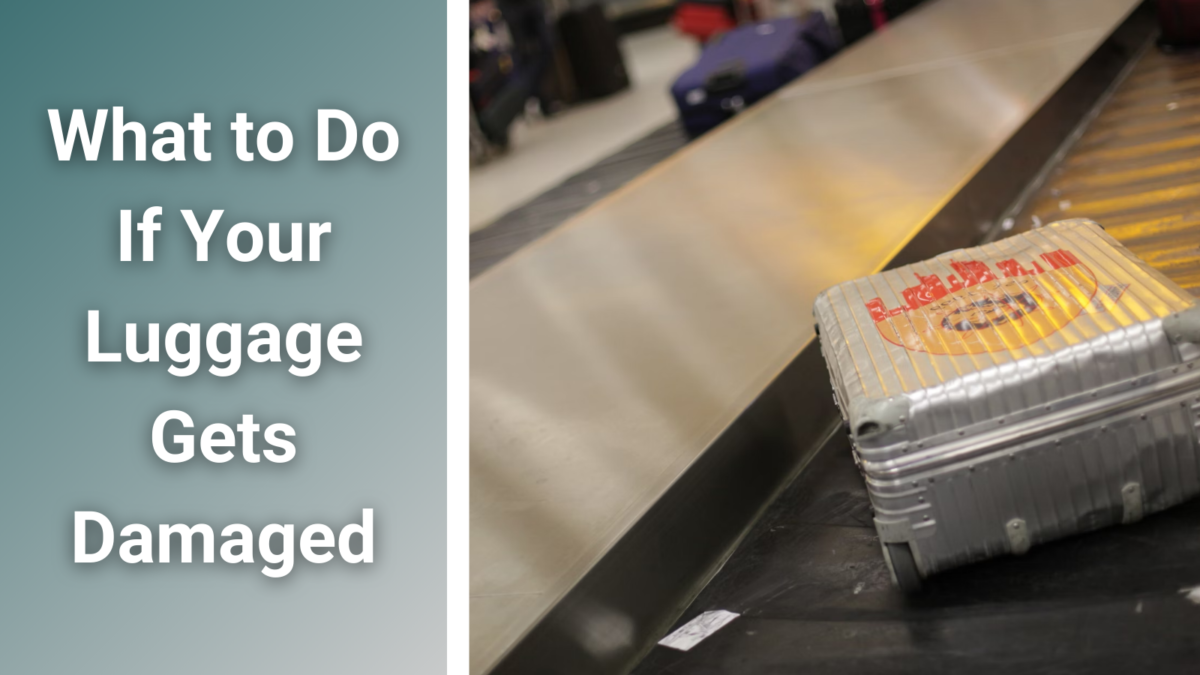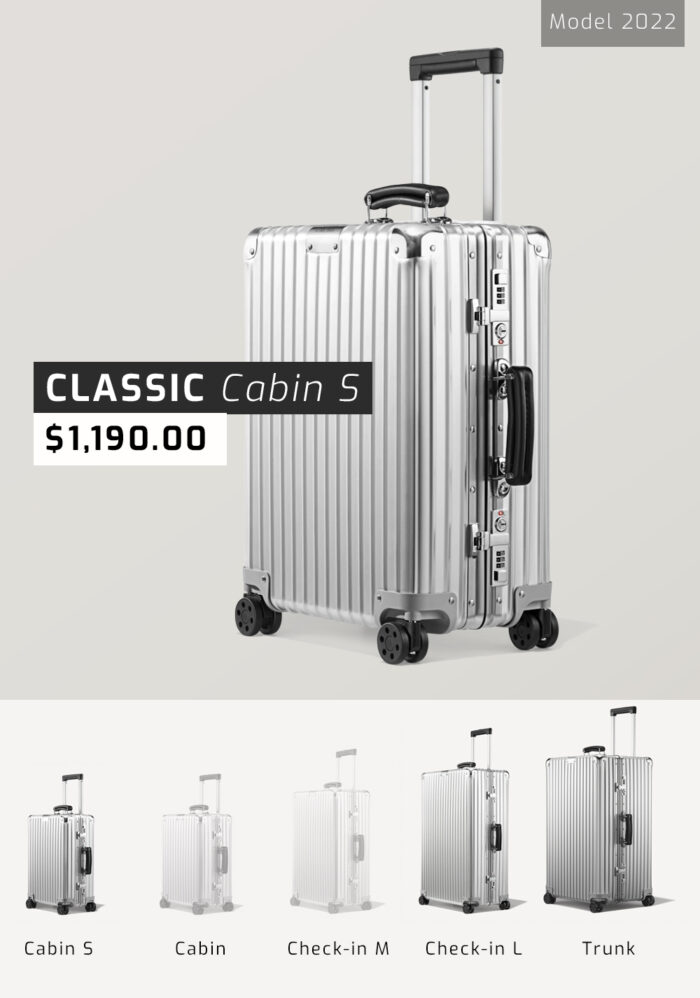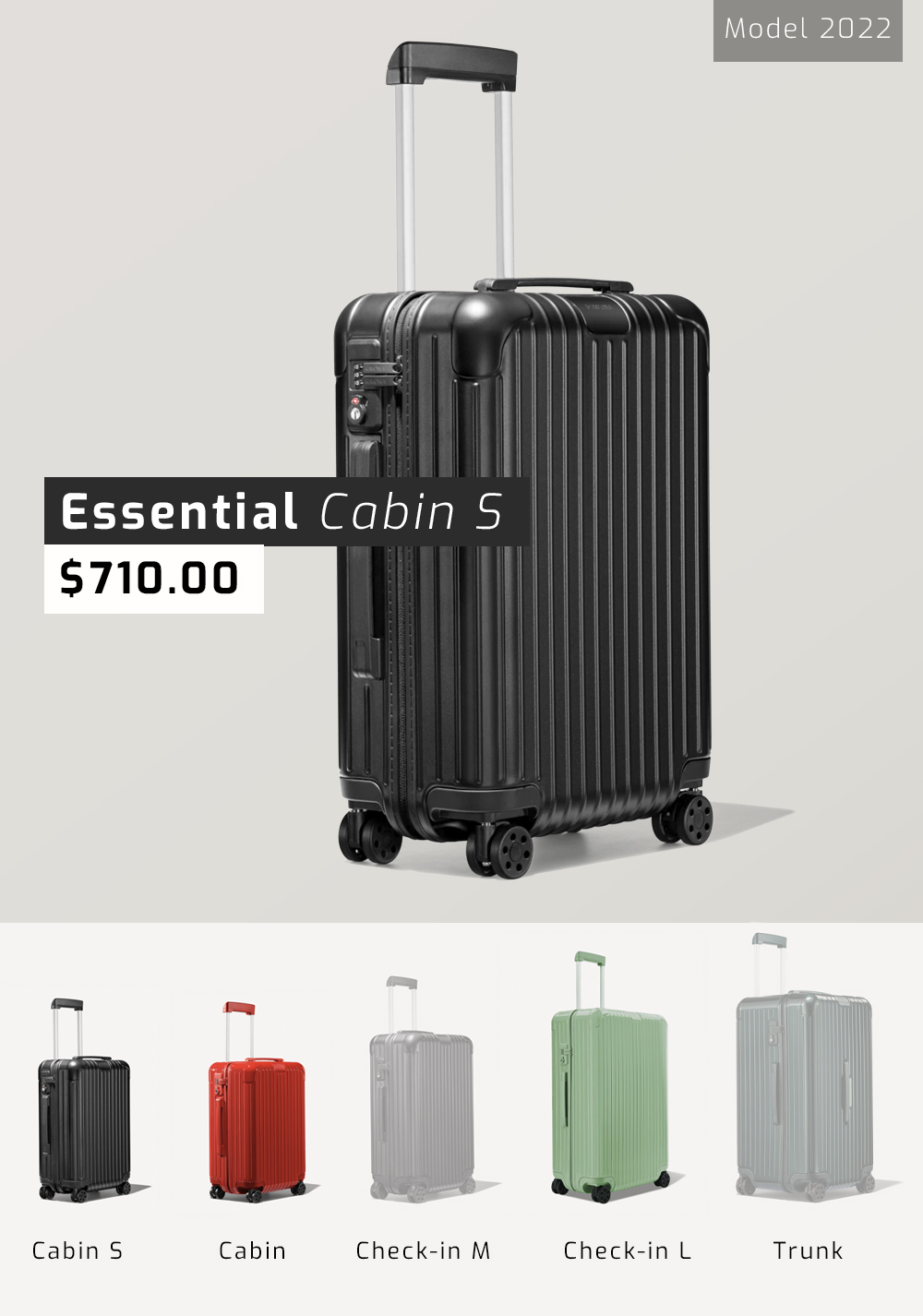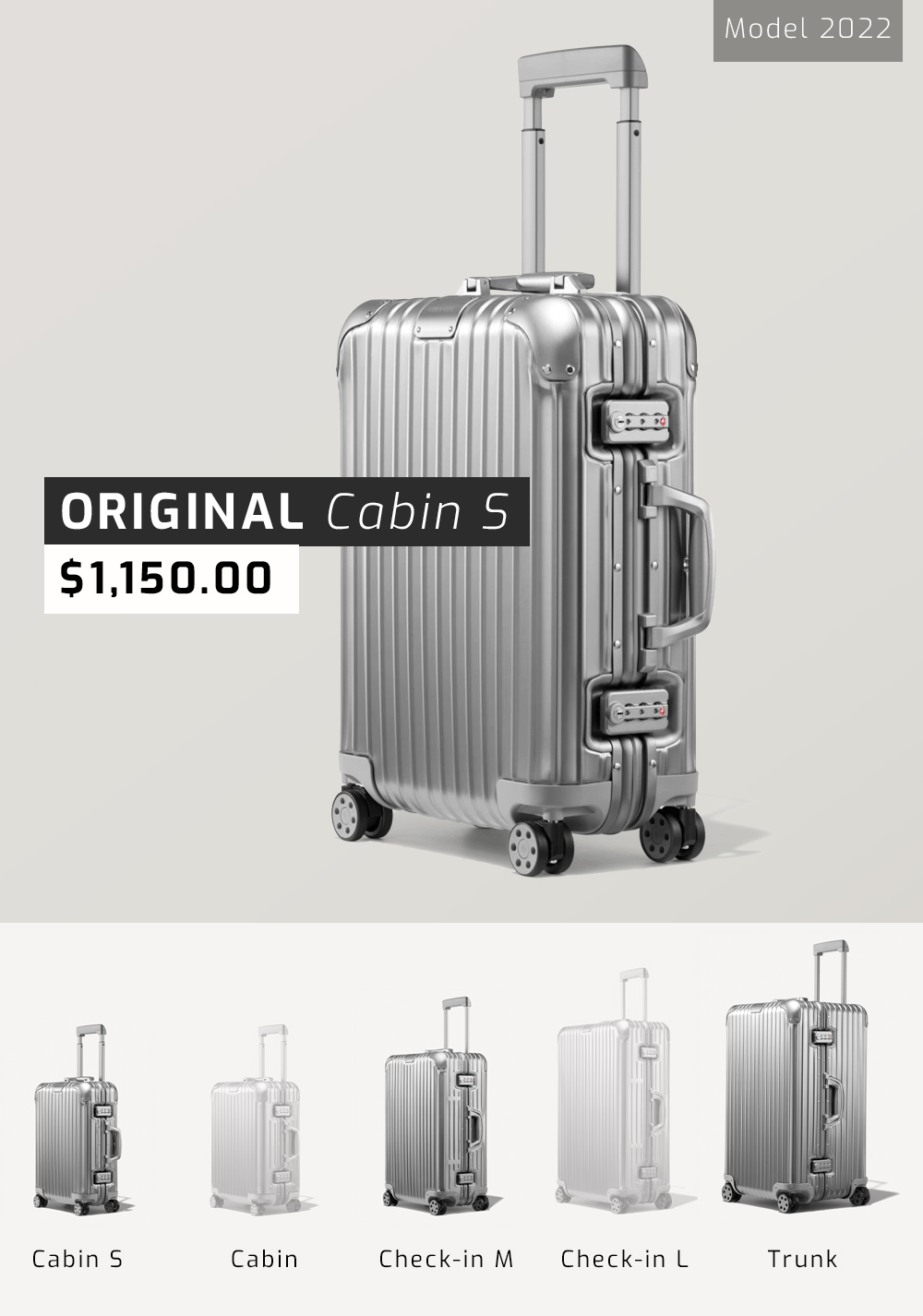Airline Broke My Rimowa and Paid for a New One: What to Do If Your Luggage Gets Damaged
Updated on November 9th, 2024
There’s nothing worse than stepping off a plane, eagerly awaiting your Rimowa suitcase, only to find it damaged or broken. It happened to me once after a long-haul flight, and trust me, it was not the kind of welcome home I had in mind.
For many of us, our suitcase isn’t just another travel accessory—it’s an investment, a reliable companion on our journeys. And when it’s something as premium as Rimowa, the stakes feel even higher.
If you’ve ever wondered what to do if this happens, you’re not alone. Many travelers, particularly frequent flyers, have had their bags handled poorly by airlines, leading to frustrating experiences with claims and repairs.
Because different regulations and policies apply based on the airline you’re flying with and the type of flight—domestic or international. Knowing your rights and what the airline is responsible for can make a big difference in how you handle the situation.
In this post, we’ll cover airline policies, how to file claims, preventive measures to protect your Rimowa, and more. By the end, you’ll know exactly what to do when your luggage suffers any mishap.
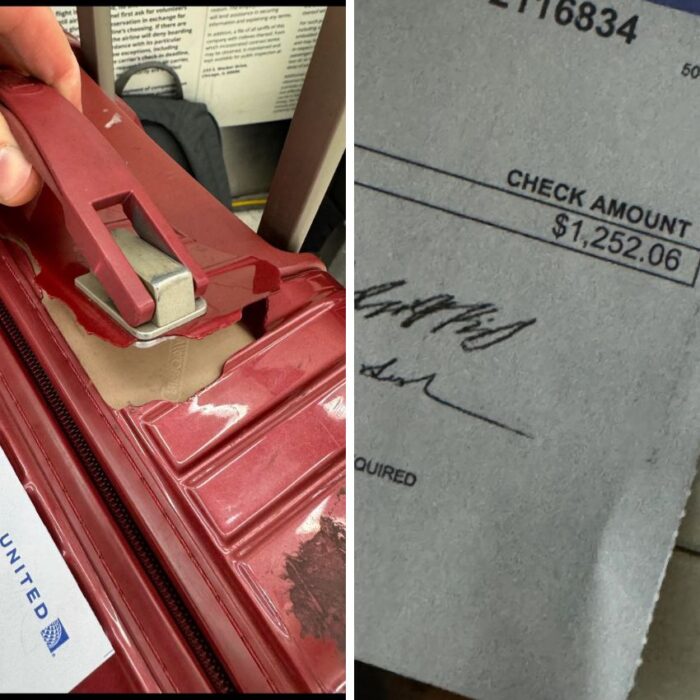
Understanding airline liability
When my Rimowa got damaged, the first thing I learned was that airlines do have certain responsibilities for luggage damaged in transit. But like everything with airlines, it’s complicated. Here’s what you should know:
Airline policies regarding damaged luggage
Airlines are generally responsible for repairing or reimbursing passengers for damage caused to luggage that occurs while it’s in their care. This includes damage that occurs from the moment you check your luggage until the moment you pick it up at the baggage carousel. It’s supposed to be in the same condition the airline accepted it.
However, they are not responsible for pre-existing damage or poor packing, so you must ensure your items are packed correctly to avoid complications when making a claim.
Most airline policies cover external damage, such as broken handles, cracked shells, or lost wheels, as these are considered damage caused by mishandling. On the other hand, normal wear and tear, such as small scuffs or scratches from routine handling of checked baggage, is usually not covered.
Furthermore, airlines often exclude certain items from coverage, particularly fragile or valuable items such as electronics or jewelry packed inside the luggage. These exclusions can usually be found in the airline’s “contract of carriage,” a document that details the airline’s responsibilities and limitations regarding passenger luggage.
For international flights (including domestic flight layovers), airlines may take responsibility for these items if they’ve accepted them and are already transporting them, even if they weren’t disclosed during check-in.
If you are concerned about damaging valuable items, consider purchasing additional insurance if the airline you are traveling with has that option. This extra coverage can help ensure you’re fully protected against damage.
International conventions and airline responsibility
Airline liability for damaged luggage is governed by the applicable international treaty, such as the Montreal Convention for most international flights and the Warsaw Convention in some cases. These conventions limit the maximum compensation you can receive for damaged luggage.
- For international flights, the maximum liability limit under the Montreal Convention is approximately $1,700. However, this limit only applies to damage directly caused by the airline.
- For domestic flights within the U.S., the Department of Transportation (DOT) requires airlines to compensate passengers for damaged baggage under DOT regulations, with a maximum liability of $3,800 per passenger.
One thing I learned the hard way is that this compensation is based on the depreciated value of your luggage, not what you originally paid.
So, if your Rimowa is a few years old, don’t expect to get its full retail price back. I was lucky that the airline offered to replace mine instead of simply reimbursing me, but this varies depending on the airline and the situation.
Baggage claim policies
Each airline has specific baggage claim policies that outline the process for reporting damage and seeking compensation. In most cases, you must file a claim within a specific timeframe—typically within 4 to 24 hours for domestic flights and 7 days for international flights, though this can vary by airline.
Checking your airline’s baggage claim policies before your trip is always a good idea. Most limitations are documented on the airline’s website, but if not, you can find more reports on what an airline will or will not take accountability for in its contract/conditions of carriage.
Major airlines like Delta, American Airlines, and British Airways provide clear instructions on their websites on how to handle damaged luggage claims, including the necessary documentation, such as photos of the damage, receipts for repairs, or proof of the luggage’s value.
That said, if an airline offers to repair your luggage instead of reimbursing you, they have most likely partnered with third-party repair companies. Alternatively, if repair isn’t possible, most airlines will offer compensation based on the current value of the luggage.
This means if your 10-year-old Rimowa suitcase, known for its durability and high price, is damaged, you may not receive the total amount you paid for it originally but rather its depreciated value.
If the luggage is beyond repair, some airlines may provide you with a replacement, but this varies from case to case.
You may also like: Rimowa Essential Lite After 10 Years of Traveling.
Steps to take when your luggage is damaged
Now that you know what airlines cover, let’s discuss what to do if your Rimowa—or any luggage—gets damaged.
1. Inspect before you leave the airport
As soon as you pick up your luggage from baggage claim, inspect it thoroughly for any signs of damage. Airlines often require in-person reporting, and some have tight deadlines.
For example, while Southwest Airlines and Frontiers Airlines only give you four hours to report the damage, Delta Airlines offers 24 hours.
Document the damage with photos displaying the inside and outside of the luggage, along with any broken items inside. Take pictures of the baggage tags and leave them attached.
It is also helpful, and I recommend writing an inventory of damaged items. It’s crucial to be thorough in this step because filing an additional claim later for missed damage might not be possible.
2. Notify the airline immediately
Once you’ve documented the damage, visit the baggage service office or check-in counter to start the claims process. You’ll need to fill out paperwork documenting the damage and collect a claim number. In some cases, airlines will email you the paperwork, which you should complete and return as quickly as possible.
Call the airline’s customer service if you’ve already left the airport when you notice the damage. However, they may ask you to return to the airport to file the claim in person.
3. Know what airlines won’t cover
While airlines are liable for certain damages to your luggage while in their care, they aren’t obligated to replace or compensate for all types of damage.
For example, airlines won’t cover damage caused by TSA inspections. Hence, in such a case, you’ll need to file a claim with the TSA instead.
They may also deny your claim if they believe the damage to your luggage is minimal or your own fault, for example, things that they deem “normal wear and tear.”
4. Use your travel credit card for extra coverage
As we mentioned earlier, the US Department of Transportation has limits on how much compensation airlines are required to offer for lost or damaged luggage.
Quick reminder: You can receive up to $3,800 for domestic flights, and the maximum liability limit set by the applicable international treaty is $1,780.
Note that airlines are not obligated to give you the amount mentioned above when you file a claim, even if you believe that the damage warrants it. Plus, you may be looking at damage that exceeds these figures.
So, what do you do if an airline damages your luggage but won’t cover the total expenses for replacement?
One option is to turn to your travel credit card, many of which offer insurance for damaged or delayed baggage.
Please file a claim with them as soon as possible and provide details like proof of fare purchase, your flight itinerary, and copies of your claim and reimbursement from the airline.
5. Invest in sturdier luggage
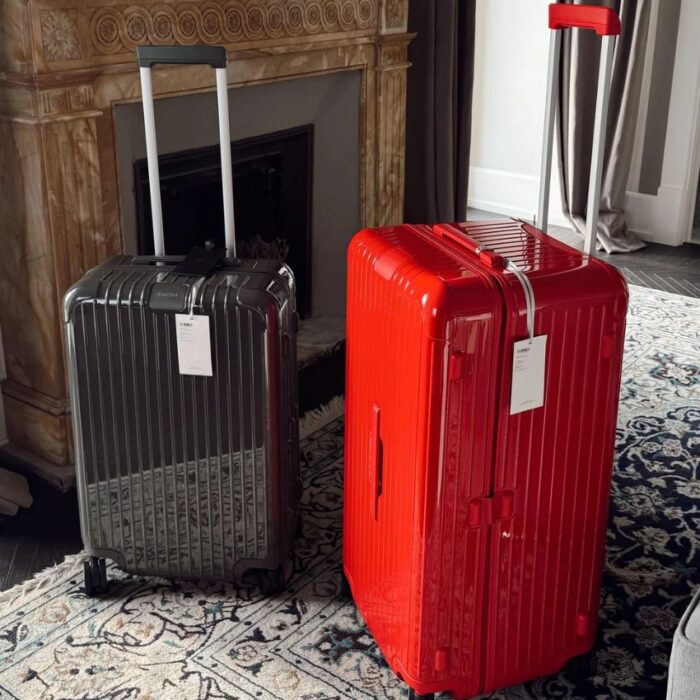
If you receive a reimbursement rather than a replacement, use the funds to invest in stronger, more durable luggage that won’t get damaged on your next flight.
Don’t spend another trip standing in a frustrating line at an airline’s baggage service office. Rimowa luggage will change the way you travel.
You may also like: How to Buy a Rimowa (Everything You Need to Know).
How to prevent luggage damage
While you can’t always prevent luggage damage, there are measures you can take to reduce the risk:
- Choose durable luggage: When purchasing luggage, research brands known for durable materials and high-quality testing. Brands that offer robust security features like TSA locks are also worth considering.
- Use luggage protection: Consider using luggage covers or protective films to prevent scratches and scuffs. These options can help keep your luggage looking new for a long time.
- Pack carefully: Be mindful of how you pack. Avoid placing heavy or sharp objects near the edges of your luggage. Packing cubes or organizers can help keep your belongings secure and prevent shifting during travel.
- Invest in luggage with a warranty: Some brands offer warranties covering damage caused by manufacturing defects. Investing in luggage with such guarantees can save you money and provide peace of mind in the long run.
Related reading: How Using a Quality Suitcase (Rimowa) is the First Step to Responsible Travel.
Takeaway: Protect your Rimowa on every trip
Luggage damage is an unfortunate reality of air travel, but by addressing the issue promptly, you can protect your Rimowa and receive the compensation you deserve when things go wrong.
Understanding airline liability and following the correct procedures will save you time, stress, and money.
One of the crucial steps to take is to document the damage, report it to the airline, and file the necessary claims to resolve the situation quickly.
Remember, investing in durable, high-quality luggage and taking a few precautions can save you from stress, time, and unnecessary expenses in the long run.
Planning to buy a Rimowa? Check out this article: How to get the best price on a new Rimowa?
FAQs
Here are some of the most frequently asked questions regarding damaged luggage and how to handle it:
Why should I address damaged luggage?
Airlines have strict timelines for reporting damaged luggage, often as short as 4 hours after your flight. Addressing it immediately ensures that your claim is processed and increases the likelihood of compensation.
What rights do I have regarding damaged luggage?
Your rights depend on whether you are flying domestically or internationally. Domestically, airlines must compensate up to $3,800 for lost or damaged baggage. Internationally, compensation follows the Montreal Convention, with a maximum of 1,288 Special Drawing Rights (about $1,700).
What happens if I don’t adhere to the airline’s procedures? Can I still pursue a small claims lawsuit?
If you fail to follow the airline’s procedures, it becomes much harder to make a case. You may still pursue small claims, but it’s essential to have documented proof and correspondence related to the issue.
What items are airlines unlikely to cover or replace?
Airlines often exclude items like fragile goods, electronics, cash, and perishables from coverage, especially if they’re not declared at check-in. Always check your airline’s policy for details.
Can I file an insurance claim for luggage damage?
Yes, many travel insurance policies cover luggage damage. Be sure to read the fine print of your travel insurance and check if it includes coverage for damaged baggage.
Does Rimowa offer replacements for damaged luggage?
Rimowa provides repair services and may replace parts, depending on the damage. However, you’ll need to provide the completed certificate of guarantee or original proof of purchase. Rimowa will determine whether the guarantee covers the defect. If this is the case, Rimowa will repair or replace the product and cover the costs incurred, including the return shipment. The purchaser bears the sending costs.
Will airlines provide reimbursement for damaged luggage?
Yes, airlines are required to compensate for damaged luggage, but the reimbursement depends on the airline’s policies, the severity of the damage, and your ability to prove the value of the luggage.
What are Rimowa’s repair charges?
Rimowa is known for its free repairs, and as of 2022, its lifetime guarantee for new suitcases covers all functional aspects of your luggage. However, Rimowa’s lifetime guarantee does not apply to cosmetic wear and tear, misuse, or abuse. In such cases, the repair may incur a cost.
For the best assistance, contact the Rimowa Client Care team, who will be happy to assist you or direct you to the closest Rimowa store.

